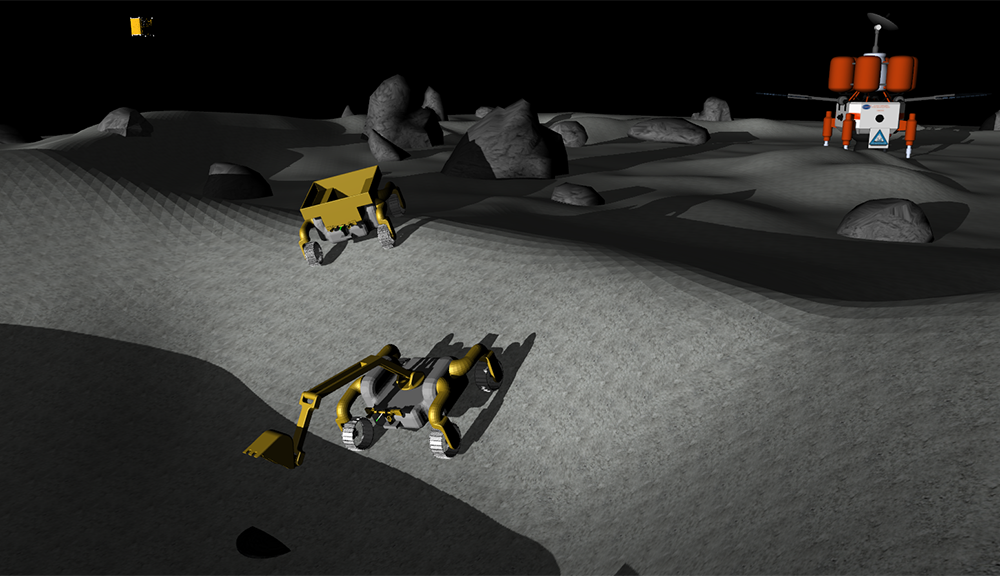Mechanical rovers can travel through space, land on other planets, and beam extraordinary photos of alien landscapes back to Earth.
But it turns out they could use a little help working together.
That’s why NASA is funding early-stage research––in a project that includes WPI researcher Carlo Pinciroli––to develop “swarm” capabilities that would allow teams of robots to collaborate and coordinate their efforts while exploring the moon and collecting mineral samples.
“We want to create a common data structure, similar to a whiteboard that team members could scribble upon, so that four to 10 robots at a time could complete scientific missions established by human controllers on Earth,” says Pinciroli, assistant professor in the Department of Robotics Engineering. “The goal is to establish decentralized coordination for mechanized explorers so that a swarm of robots could communicate with one another, assign tasks to one another, and successfully complete missions, even if one or more robots deteriorates.”
Pinciroli is a subcontractor on the 13-month project, which is being led by Charles River Analytics Inc. (Charles River) of Cambridge. In another WPI connection, David Koelle ’97, director of engineering of Human-Centered Intelligent Systems at Charles River, is the project’s technical leader. The project is funded with a Phase I $125,000 Small Business Technology Transfer (STTR) contract from NASA’s Lunar Exploration Program.
The work is among several projects at WPI that are currently funded by NASA: Jamal Yagoobi, professor and head of the Department of Mechanical and Materials Engineering, has received NASA awards to research oscillating heat pipes and a two-phase heat transport device; and Danielle Cote, assistant professor in the Mechanical and Materials Engineering Department, received a NASA Early Career Faculty award for her research in developing shape memory alloy applications with cold spray technology.
Charles River and Pinciroli will develop technology to enable robots to respond autonomously to unexpected situations, swarm to achieve tasks, and manage faults as vehicles degrade over time. The goal is to deploy the technology on advanced hardware platforms during future research.






